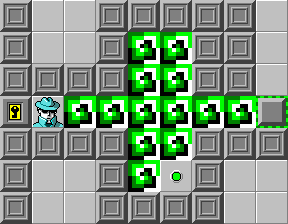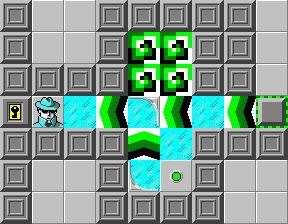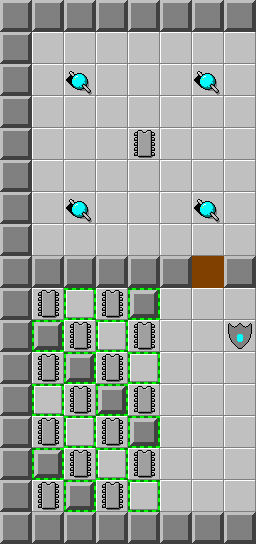Please create an account or Login! Have fun!
Derandomization: Difference between revisions
Tylersontag (talk | contribs) m (Tylersontag moved page derandomization to Derandomization over redirect: revert) |
Indyindeed (talk | contribs) |
||
| (One intermediate revision by the same user not shown) | |||
| Line 1: | Line 1: | ||
The process of '''derandomization''' is a method used on [[random-element]] <!---No hyphen = the walkers, blobs and random force floors. This is the level theme.---> levels, where the [[Melinda]] time would be extremely difficult to achieve, to determine the Melinda time. In a separate, unofficial level, the [[random element]]s are either replaced with nonrandom tiles or are simply removed altogether. The resulting score, assuming that this can still be done with the random elements, is the Melinda time. | The process of '''derandomization''' is a method used on [[random-element]] <!---No hyphen = the walkers, blobs and random force floors. This is the level theme.---> levels, where the [[Melinda]] time would be extremely difficult to achieve, to determine the Melinda time. In a separate, unofficial level, the [[random element]]s are either replaced with nonrandom tiles or are simply removed altogether. The resulting score, assuming that this can still be done with the random elements, is the Melinda time. | ||
In extreme cases such as [[Monster Lab]] or [[Lead Us Not into Temptation]], a temporary [[AVI]] solution is used as the official solution until it can be scored with the real level; as derandomization was not developed until after [[CCLP2]], such measures have only been utilized for the rare [[CCLP3]] levels with random elements. | In extreme cases such as [[Monster Lab]] or [[Lead Us Not into Temptation]], a temporary [[AVI]] solution is used as the official solution until it can be scored with the real level; as derandomization was not developed until after [[Chip's Challenge Level Pack 2|CCLP2]], such measures have only been utilized for the rare [[Chip's Challenge Level Pack 3|CCLP3]] levels with random elements. | ||
== Replacing derandomization == | == Replacing derandomization == | ||
Latest revision as of 03:26, 3 June 2019
The process of derandomization is a method used on random-element levels, where the Melinda time would be extremely difficult to achieve, to determine the Melinda time. In a separate, unofficial level, the random elements are either replaced with nonrandom tiles or are simply removed altogether. The resulting score, assuming that this can still be done with the random elements, is the Melinda time.
In extreme cases such as Monster Lab or Lead Us Not into Temptation, a temporary AVI solution is used as the official solution until it can be scored with the real level; as derandomization was not developed until after CCLP2, such measures have only been utilized for the rare CCLP3 levels with random elements.
Replacing derandomization[edit]
There are two types of derandomization, depending on the nature of the random elements. For random force floors, they are typically replaced with other sliding tiles which still allow the same boosting overrides. Often ice is put ahead of each force floor, but sometimes force floors against each other are also used. One historical example is Mads' Rush II:
To reach the bold time of 26, Chip would have to be moved R off [2, 3], R or D off [4, 3], and depending on that, either D off [5, 4] or R/D off [4, 5]/[5, 4] (the latter depending on which override off [4, 4] Chip takes), then after hitting the green button, U off [5, 4] and R off [6, 3]. As the chances of this work out to 1 in 512 ([1/4]^4 * 1/2), this was not scored for a long time. When derandomized, the section will look somewhat like this:
Destroy derandomization[edit]
When walkers or blobs interfere instead, it can often be easier to derandomize. Frequently, the solution would be to simply remove the offending monsters, as one might do for Oorto Geld II:
Here, the walkers control nothing in the level unless they run into the center (very unlikely), and destroying them would make determining the Melinda time much easier. It was eventually found to be 671, but derandomization might have made it simpler to write the route.
Famous derandomizable levels[edit]
- Blobnet
- Monster Lab
- Block N Roll
- Blobdance
- Lot of Danger
- Mads' Rush II
- Loop
- Teeth (CCLP2 level)
- Keep Trying (though there is so much randomness the job is impossible)
- Civilization of Creatures
- Lead Us Not into Temptation


